Disclaimer: The following webinar contains sensitive content and was recorded during the COVID Pandemic. This may be triggering to some individuals. Please proceed at your own discretion.
Read Webinar Summary
Comprehensive Brow Lift Procedures: Webinar Summary
This webinar provides an in-depth overview of brow lift procedures presented by a facial plastic surgeon from Marietta Facial Plastics, Laser & Aesthetics Center, who previously served as chief of facial plastic surgery at Emory. The presentation covers patient assessment techniques, various surgical approaches, and key considerations for optimal results.
Practice Overview
The surgeon emphasizes that aesthetic procedures now comprise a significant portion of their practice, reflecting the growing demand for facial rejuvenation procedures. Their extensive background in facial plastic surgery provides the foundation for their comprehensive approach to brow lift procedures.
Patient Assessment Criteria
Key Anatomical MeasurementsWhen evaluating patients for brow lift procedures, the surgeon considers several critical measurements:
- Brow-to-lid margin distance: The ideal measurement is 1.5 cm
- Brow position: Should be positioned above the bony orbital rim
- Arch placement: The natural arch should be located in the lateral third of the brow
Additional Considerations
- Facial asymmetry: The surgeon notes that facial asymmetry is common and can significantly affect brow symmetry
- Preoperative preparation: Botox is frequently used before surgery to relax the frontalis muscle and prevent unwanted brow movement during the healing process
Surgical Techniques
1. Endoscopic Brow LiftThis minimally invasive technique involves:
- Small incisions for reduced scarring
- Use of endoscopes to visualize and elevate the scalp
- Repositioning of the brow through precise manipulation
Advantages: Suitable for subtle lifts with minimal scarring
Considerations: May result in hairline elevation
2. Lateral Brow Lift
- Approach: Involves a lateral incision to specifically lift the tail of the brow
- Setting: Often performed as an office-based procedure due to its minimally invasive nature
- Target: Ideal for patients requiring correction primarily in the lateral brow area
3. Mid Forehead Brow Lift
- Indications: Reserved for specific cases involving patients with deep forehead transverse furrows and fair skin
- Scarring: The resulting scar tends to fade well over time
- Patient selection: Careful consideration of skin type and furrow depth is essential
4. Pre-tracheal Brow Lift
- Incision placement: Made just in front of the hairline
- Coverage: Lifts the entire brow for comprehensive rejuvenation
- Additional benefits: Can address deep forehead lines and lower an excessively high hairline
- Technical consideration: The surgeon emphasizes following the irregular pattern of the natural hairline to minimize scar visibility
Outdated Techniques
The surgeon explicitly states they no longer recommend or perform certain traditional approaches:
- Direct brow lifts: Considered antiquated
- Coronal brow lifts: Also considered outdated
- Corrugator muscle resection: The surgeon prefers using Botox to control corrugator muscles rather than surgical resection due to the risk of contour defects
Clinical Evidence and Results
The presentation includes extensive clinical documentation:
- Multiple before and after patient photographs
- Real patient examples demonstrating various techniques
- Visual evidence of successful outcomes across different approaches
Philosophy and Patient Care
Individualized ApproachThe surgeon strongly emphasizes the importance of:
- Tailoring each procedure to the patient’s individual aesthetic goals
- Considering each patient’s unique facial structure
- Avoiding a “one-size-fits-all” approach to brow lifting
Ultimate GoalsThe overarching philosophy centers on making patients feel:
- Beautiful
- Confident
- Happy
Key Takeaways
- Assessment is crucial: Proper measurement and evaluation of brow position, facial asymmetry, and individual anatomy guide treatment planning
- Multiple techniques available: Different approaches suit different patient needs and anatomical considerations
- Modern approaches preferred: Endoscopic and pre-tracheal techniques offer advantages over traditional methods
- Individualization is essential: Success depends on matching the technique to the patient’s specific needs and goals
- Comprehensive care: From preoperative Botox to careful incision planning, attention to detail throughout the process ensures optimal results
This webinar provides valuable insights for both practitioners and patients considering brow lift procedures, emphasizing the importance of proper assessment, technique selection, and individualized care in achieving successful aesthetic outcomes.
Brow Lift
A brow lift can give the face a more youthful, brighter, more welcoming appearance by lifting the eyebrows, which creates a greater distance from the eyelid to the eyebrow. This creates a more open appearance of the eye area. A secondary benefit is that the brows can be lifted asymmetrically to compensate for underlying facial asymmetries, and made to look more symmetric. Lastly, a brow lift can reduce the need for the forehead muscles to lift the eyebrows and thus the patient enjoys a smoother, more relaxed forehead appearance and reduced frown lines. To determine if a brow lift is appropriate, a consultation is required. Dr. Yellin uses several techniques including, a direct brow lift in patients with facial paralysis and no transverse forehead crease, a mid-forehead brow lift in men with deep forehead creases and a receding hairline, a hairline incision or pretrichial brow lift in those with a high forehead or very severe brow descent.
However, in most cases, either a lateral brow lift or endoscopic brow lift is performed. For a lateral brow lift, the arch and lateral half of the eyebrow are elevated placing the brow at a more pleasing position and secondarily, improving lateral eyelid hooding. Two incisions are hidden in the hairline to achieve this type of brow lift. An endoscopic technique is performed when both the lateral and medial brow require elevation and the patient has an adequate hairline. Five small incisions behind the hairline are used to reposition the brow without the need to excise skin or hair. The brow is anchored in place with absorbable plates so no foreign material remains once fully healed. All of the brow lift techniques except for the endoscopic technique can be performed in the office using local anesthesia and oral Xanax. A brow lift may be performed in conjunction with an upper eyelid contouring procedure (blepharoplasty) to comprehensively address the multifactorial age-related changes seen in the eye area.
Before & After Photos
*All photos shown are patients of Dr. Yellin and are the property of Marietta Facial Plastic Surgery, Laser & Aesthetics Center. Individual results may vary. Please see full disclaimer.
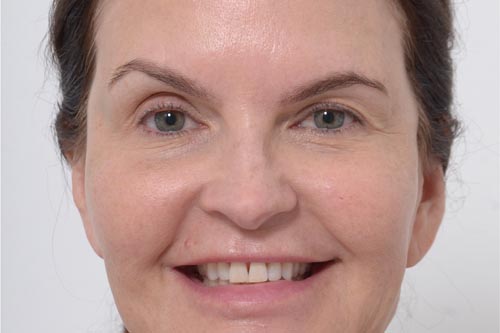
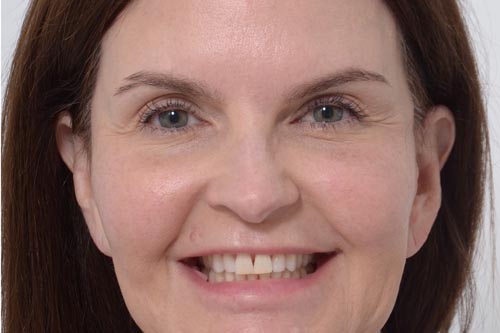
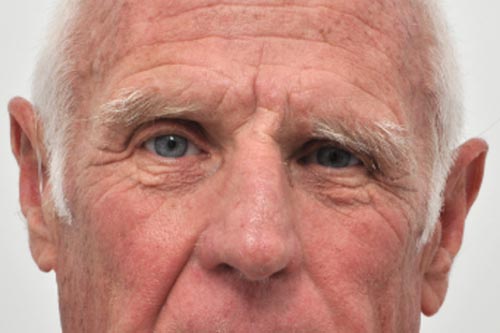
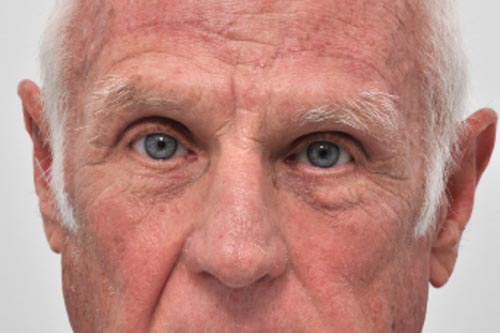
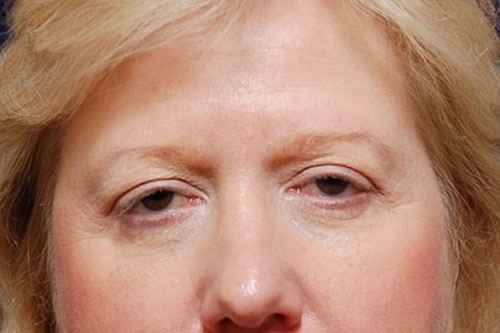
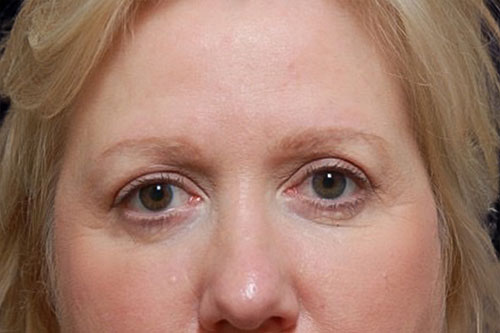
All photographs and other material presented on this website are the property of Dr. Yellin. Please do not download or reproduce the images without the express written consent of Dr. Yellin.
Disclaimer: Individual results may vary. No guarantee of results, stated or implied by any photo or statement on this website can be made. Please see full disclaimer.
Comprehensive Support Throughout Your Brow Lift Journey
At Marietta Facial Plastic Surgery, Laser & Aesthetics Center, we are committed to providing comprehensive support every step of the way in your brow lift journey. From your initial consultation to the final follow-up appointment, our experienced team ensures that you feel informed, comfortable, and confident throughout the entire process. We take the time to understand your unique aesthetic goals and facial structure, allowing us to tailor a personalized treatment plan that achieves natural and harmonious results. Utilizing the latest surgical techniques, we effectively address concerns such as sagging brows, forehead wrinkles, and tired-looking eyes to create a more youthful and refreshed appearance. Our compassionate approach extends to your recovery, where we offer detailed guidance and attentive care to ensure a smooth and comfortable healing process. Trust Marietta Facial Plastic Surgery, Laser & Aesthetics Center to enhance your facial harmony and boost your confidence with precision, artistry, and personalized attention.
Atlanta & Marietta Brow Lift Surgeons
Since 1996, Marietta Facial Plastic Surgery, Laser & Aesthetics Center has established itself as a leading provider of brow lifts. We are pleased to serve patients throughout Atlanta, Marietta, Acworth, Woodstock, and from all over the country. To schedule your consultation or to request more information, please fill out the form below or call us at (770) 425-7575.
FAQs
A brow lift elevates brows that have drifted downward with age or genetics, smoothing heaviness across the upper eyelids and reducing deep horizontal furrows. By adjusting skin, fat, and supporting muscles, the procedure restores the natural arch and softens the stern or tired expression produced by low-set brows. The refreshed position also creates more space between lashes and brow hairs, brightening the eye area without altering its intrinsic shape.
How does brow descent affect the upper eyelids?
When the brow sags below the bony orbital rim, redundant skin bunches over the eyelid crease and can press on lashes. People often compensate by unconsciously lifting their forehead muscles, leading to etched worry lines. Re-positioning the brow relieves that constant effort, allowing the eyelid skin to drape properly and the eyes to appear more open and less fatigued.
What is the difference between endoscopic and classic brow lift techniques?
An endoscopic approach uses several short, hidden scalp incisions and a tiny camera to release and elevate tissues, minimizing visible scarring. A classic (coronal or trichophytic) lift employs a longer incision within the hairline or just at its edge, providing a broad view for extensive adjustment. Choice depends on brow position, hairline height, skin laxity, and the degree of lift desired, balancing visibility of scars with surgical access.
Can a brow lift soften forehead wrinkles?
Yes. Many forehead lines form because the frontalis muscle overworks to keep low brows from shadowing the eyes. Elevating brows to a more youthful level lessens that overactivity, allowing the muscle to relax. The reduction in repetitive strain makes horizontal creases appear shallower, and residual fine lines can be further refined with skincare or injectable treatments if desired.
What role does the frontalis muscle play in brow aging?
The frontalis is the sole brow-elevating muscle. When brow tissues droop, this muscle must contract continuously to counter the descent, etching deep lines across the forehead. A brow lift repositions heavy tissue so the frontalis can rest, decreasing dependence on compensatory lifting and restoring smoother skin tone and more comfortable facial expression.
Who is a suitable candidate for brow lift surgery?
Good candidates experience persistent brow heaviness, forehead strain, or a chronically stern appearance unrelieved by skincare or injectables. They should enjoy overall health, have realistic expectations, and recognize that the procedure enhances natural contours rather than creating a dramatically new look. A consultation assessing skin elasticity, brow symmetry, and facial proportion confirms whether surgical elevation fits personal goals.
How are brow lifts tailored for masculine versus feminine aesthetics?
Masculine brows typically rest lower with a flatter shape, while feminine brows curve gently above the orbital rim. Surgeons respect these norms by adjusting lift height and arc placement to suit gender identity and individual taste. Subtle, lateral emphasis can feminize without over-arching; a modest central elevation can refresh men without creating an overly high or arched outline.
Where are incisions typically placed, and will scars be visible?
Incisions hide within scalp hair, along the hairline edge, or in the temporal hair tuft, depending on technique. These strategic locations camouflage scars among follicles and natural creases. Careful closure, gentle handling of tissues, and sunlight protection help scars mature into fine lines that are difficult to detect during normal conversation or hairstyling.
How does hairline position influence brow lift planning?
Individuals with a high forehead may benefit from a trichophytic approach that allows simultaneous brow elevation and subtle hairline lowering. Those with a low hairline often suit an endoscopic method to avoid further descent of hair toward the brow. Assessing forehead height, density, and styling preferences guides incision choice and direction of tissue movement.
What is a temporal brow lift and when is it chosen?
A temporal (lateral) lift targets outer-third brow droop that causes a sad or hooded eye look, leaving the central brow largely untouched. Short incisions behind the hairline lift the brow tail and smooth crow’s-feet without altering mid-forehead contours. It suits patients whose main concern is lateral heaviness rather than full-width brow descent.
How do surgeons ensure a natural, non-surprised look?
Aesthetic planning evaluates brow height relative to orbital rim, hairline, and eyelid anatomy. Surgeons elevate tissues along anatomical planes, halt the lift at an age-appropriate level, and secure deep layers rather than pulling surface skin. Fine-tuning symmetry and curve prevents an over-arched or startled expression, yielding a relaxed, refreshed appearance in harmony with facial proportions.
Can a brow lift improve asymmetrical brows?
Yes. Most faces have minor side-to-side differences. During surgery, deeper attachments can be released more on one side, and fixation points adjusted so each brow rests at a balanced height and angle. While perfect mirror symmetry is impossible, tailored adjustments markedly reduce noticeable imbalance and help makeup and grooming appear more even.
How does skin elasticity impact brow lift technique selection?
Elastic skin molds smoothly over repositioned tissues, favoring minimally invasive lifts. Thicker or sun-damaged skin may need broader release or limited surface trimming to avoid bunching. Surgeons assess collagen quality and adjust incision length, vector of lift, and degree of undermining to achieve a sleek drape without excess tension or rippling.
Are nonsurgical options effective alternatives to a brow lift?
Neuromodulators can provide a mild chemical brow lift by relaxing downward-pulling muscles, and energy-based devices may induce modest tightening. While useful for subtle elevation or maintenance, these methods cannot reposition heavy tissue or correct significant descent. Surgery remains the definitive approach when structural change is needed, although nonsurgical treatments can complement results.
Can a brow lift relieve tension headaches associated with brow strain?
Some patients notice fewer forehead tension sensations after surgery because the frontalis muscle no longer works constantly to raise heavy brows. While brow lift is not a primary headache treatment, reducing muscle overexertion may lessen certain strain-related discomforts. A thorough medical evaluation distinguishes cosmetic benefit from neurological headache management.
How does eyebrow shape affect perceived emotion?
Low, flat brows can read as fatigued or stern, while overly high arches may appear surprised. The subtle curve and position of each brow influence signals of approachability, alertness, and youth. By restoring brows to a balanced anatomical height with a gentle taper at the tail, a brow lift refines non-verbal cues, helping expressions align with inner mood.
What misconceptions exist about brow lifts?
Many assume the procedure inevitably produces a “pulled” or startled look. Modern techniques focus on deep tissue repositioning along natural vectors, not superficial skin tightening. Others believe only older individuals benefit; genetics or sun damage can prompt early brow descent. Properly planned surgery simply refreshes, leaving friends remarking on restfulness rather than detecting an operation.
How is nerve safety protected during brow lift surgery?
Surgeons study the course of sensory and motor nerves across the forehead and temples, using endoscopic visualization or precise open dissection to avoid vital branches. Gentle tissue handling, limited cautery near nerve pathways, and careful depth control minimize risk of numbness or brow movement changes, preserving natural sensation and expression.
Does a brow lift change eye shape?
The procedure elevates brow tissues above the orbital rim without altering eyelid margin or globe position. Eyes appear larger because redundant skin no longer shadows the lid, but their fundamental shape and spacing remain unchanged. By enhancing the frame rather than the eye itself, a brow lift maintains individuality while brightening overall gaze.
How should someone prepare for a brow lift consultation?
Bring photos of your younger self to illustrate natural brow height, note any asymmetry, and clarify goals—whether subtle lift or noticeable arch restoration. Be ready to discuss medical history, skin-care habits, and lifestyle factors that influence healing. Open dialogue about expectations helps the surgeon design a personalized plan that prioritizes safety and authentic results.
